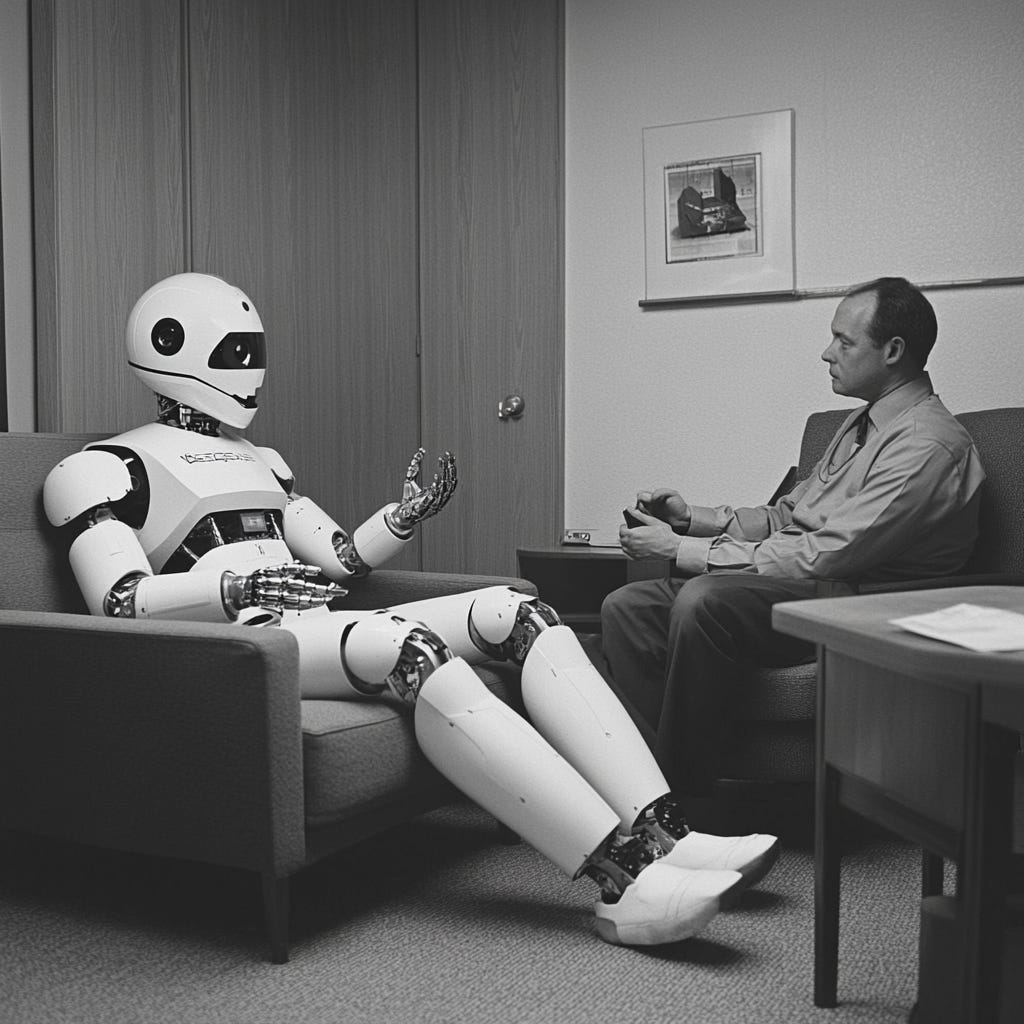Human empathy still reigns supreme over AI (for now).
This week: We dig deep into humanity and how we still have the leg up on AI in the product space.
Highlights This Week
Key Insight – AI is an invaluable tool for data analysis and efficiency, but it cannot replace human intuition and empathy, which are essential for truly understanding user needs.
Debate Question – In which areas should product teams rely on human interaction over AI-generated insights to maintain deeper user connections?
Actionable Tip – Incorporate user feedback mechanisms into your process to ensure honest user conversations before making product decisions. Use AI to enhance your understanding, but always prioritize human interaction for deeper insights.
By now, it’s no secret that AI has become a revelation in our product lives. We’ve seen how it can automate data aggregation, streamline workflows, and even generate insights that help shape product decisions in every industry. But let’s talk about where AI reaches its limits - and where human intuition, empathy, and connection step in to fill the gap.
While AI has made significant strides, especially in helping product professionals save time and uncover patterns, there are areas it simply can’t replicate. At least, not yet.
This is where AI falls short - there’s an empathy deficit.
No matter how well AI can crunch numbers, analyze feedback, or generate user insights, it cannot truly empathize.
Sure, it can mimic empathetic language or flag common user pain points, but it doesn’t understand the “why” behind those user frustrations. Empathy isn’t just about identifying problems - it’s about understanding the emotional drivers that influence user behavior.
In my experience, the most meaningful product insights often come from direct, human-to-human interaction. AI might be able to analyze survey responses and flag recurring issues, but it won’t catch the slight pause before a user answers a question or the frustration in their voice when they describe a pain point.
These subtleties help us, as product people, truly understand the problem.
Even when AI generates great questions for user interviews, it can’t go off-script. As humans, we can pivot when necessary, ask probing follow-ups, and adapt in real-time based on the emotional cues we pick up. This ability to "read between the lines" is crucial when uncovering deep insights that AI alone might miss.
AI is a tool, not a solution.
At its core, AI is a powerful tool for gathering and processing data. It helps us zoom out to see the bigger picture and speeds up processes that would take us hours to accomplish manually. But it’s just that - a tool. It can’t replace human intuition, nor should it.
I’ve worked with AI to analyze user survey data, and it’s been incredibly helpful in categorizing feedback and highlighting recurring themes. Yet, once those insights are surfaced, it’s up to us to dig deeper. The real value comes when we connect the dots and understand the emotions, motivations, and frustrations driving user behavior.
AI can show us what’s happening - but only humans can uncover why it’s happening.
This is where time spent directly with users still proves invaluable. No matter how advanced AI becomes, there’s no substitute for hearing directly from users. Getting time in front of them—whether through interviews, observation, or informal chats—is still the best way to uncover deeper insights.
At a minimum, we should integrate user feedback mechanisms into our processes, allowing us to have honest conversations before deciding which problems to solve. These interactions ground us in reality and help us prioritize based on genuine user needs.
We need to balance AI’s strengths with human capabilities.
So, where does that leave us as product professionals?
The goal isn’t to replace empathy with AI or rely solely on technology for decision-making. Instead, we need to harness AI's strengths to do what it does best - analyze data, provide insights, and save time - while leaning into our human capabilities to build relationships, ask the right questions, and understand users on a deeper level.
When we combine AI’s analytical power with our ability to empathize and connect with users, we unlock the true potential of product development. AI equips us to be more efficient, but human intuition and empathy transform that efficiency into meaningful impact.
Without the human element, AI is just a tool; with it, we create products that meet needs and truly resonate. That’s where the magic happens.
Final Thoughts.
As it evolves, AI will undoubtedly play an even more significant role in product management. But human empathy remains irreplaceable now and for the foreseeable future.
Technology will keep evolving, but our ability to connect with users and truly understand their needs will always be the foundation of building great products.
How are you balancing AI’s strengths with your human capabilities? What areas do you still feel need a personal touch?
Share your thoughts in the comments below.
Thank you for reading on Substack, and be sure to connect with us on LinkedIn.
Are you interested in talking about product things with me directly? Book a 15-minute chat, and let’s party.



Thanks Mike for this great post. Similar to Alex I am also using AI mostly for research and brainstorming. I have not found it to be helpful in analyzing insights and consumer interview with what I am looking for.
I keep AI for research 'stuff'; like market research, organising data sets, etc.
The immediate answer to your question is user interviews & insights. Either you don't rely on customer interviews (broadly the Steve Jobs / Henry Ford approach, customers are stupid, yada yada) in which case AI doesn't help because you don't need insights. Or you rely on customer feedback, in which case the human touch is super important because you don't want an AI glossing over details or averaging things out.